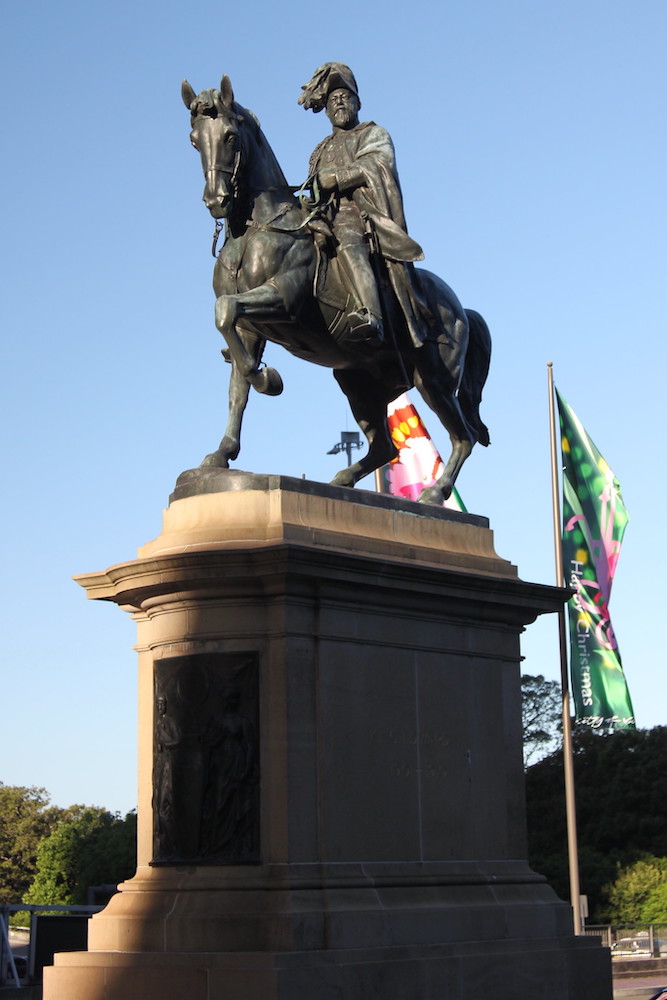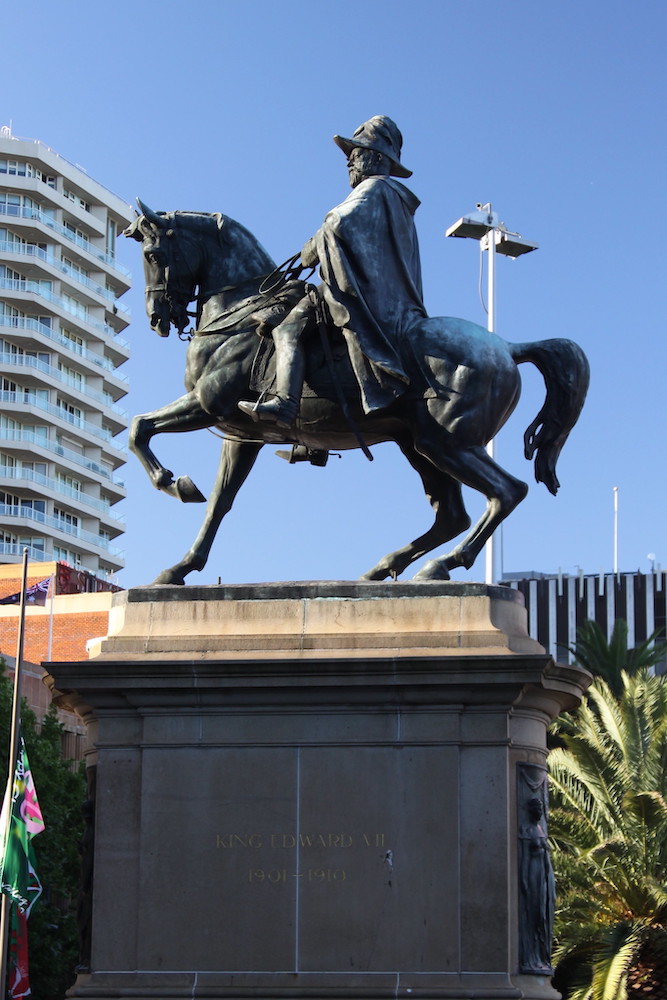
King Edward VII (1841-1910). Sir Thomas Brock. 1922. Sydney, Australia. Click on images to enlarge them.
When King Edward VII died in 1910, the citizens of Sydney decided to erect an equestrian statue in his memory. They approached Thomas Brock, but he regretfully declined the commission as he had recently agreed to produce a memorial statue for India and was still working on bronze statuary for the Victoria Memorial.
In 1913 the Australian High Commissioner in London enlisted the help of Brock’s close friend Sir Edward Poynter, President of the Royal Academy, and together they persuaded Brock to change his mind and accept the commission. Work on the statue was delayed” by the 1914-18 War and the statue was not completed until 1922. The total cost, including shipment to Sydney, was £6,000. It was unveiled by the Governor of New South Wales, Sir Walter Davidson, on 24 May 1922.


Brock resisted the temptation to produce a simple replica of the Delhi statue, which shows the king bareheaded. In the Sydney statue, the king wears a splendid plumed hat and carries a field-marshal’s baton in his right hand. In contrast to the rather placid Delhi version, his horse paws the ground impatiently. The pedestal has two bronze bas reliefs of allegorical figures representing Peace, Progress, Empire and Unity.
Text by John Sankey. Photographs by "cskk," originally posted on Flickr and available for reuse on the Attribution-NonCommercial-NoDerivs 2.0 Generic (CC BY-NC-ND 2.0) licence. Many thanks to Caroline Jarrett (John Sankey's daughter) for her help with this page. — JB
Bibliography
Brock, Frederick. Thomas Brock, Forgotten Sculptor of the Victoria Memorial. Ed. John Sankey. Authorhouse 2012. pp. 24-27.
Last modified 30 April 2014